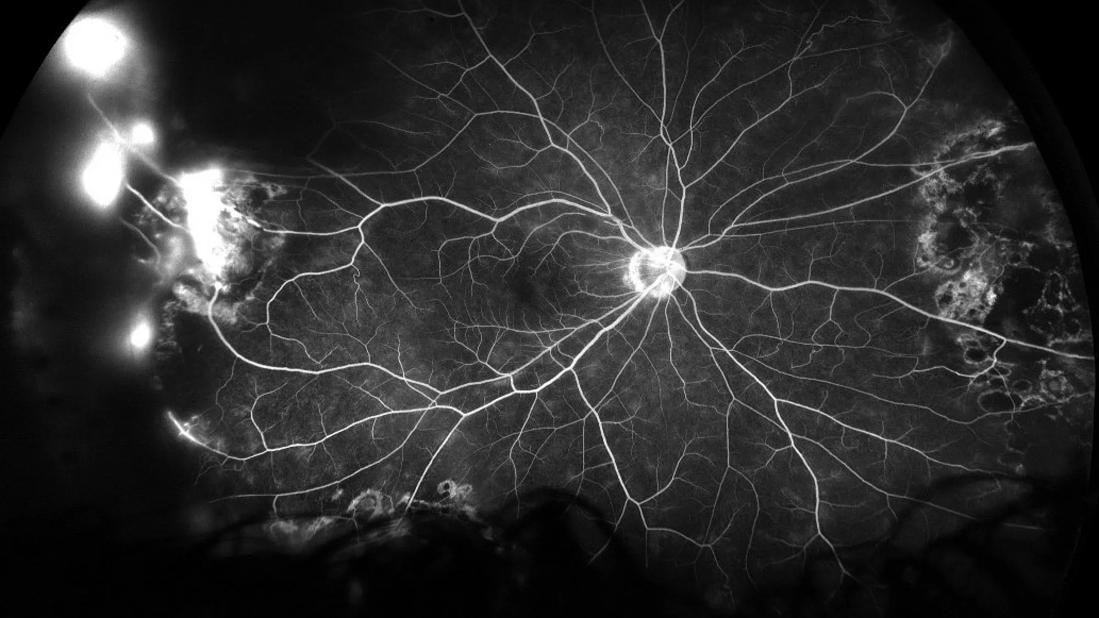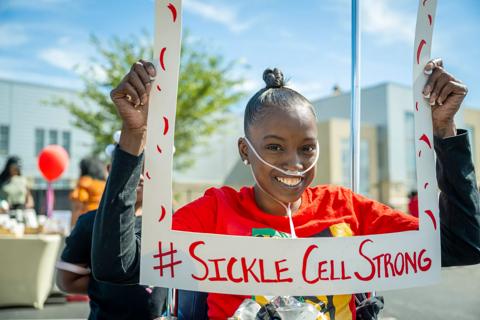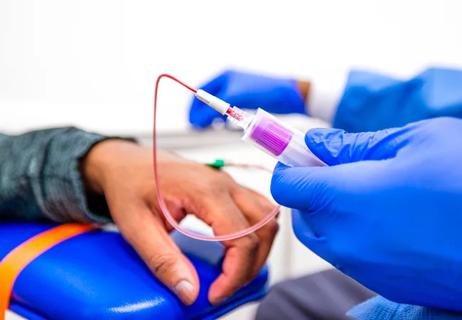Watch for sudden unilateral vision loss without pain

Sickle cell retinopathy (shown above, in the fluorescein angiography image of leaking blood vessels) isn’t the only ocular manifestation of sickle cell disease. A study by researchers at Cleveland Clinic Cole Eye Institute has found that people with sickle cell disease also are at higher risk of retinal vascular occlusion.
Advertisement
Cleveland Clinic is a non-profit academic medical center. Advertising on our site helps support our mission. We do not endorse non-Cleveland Clinic products or services. Policy
“In general, we think of retinal artery or vein occlusions occurring in older patients,” says senior author Katherine Talcott, MD, a vitreoretinal surgeon at the Cole Eye Institute. “This work highlights that occlusions can occur in younger patients too, including those with sickle cell disease.”
Cole Eye Institute resident Gabriel Kaufmann, MD, proposed this research after his first year of training, which included encounters with general medicine patients on inpatient floors at Cleveland Clinic.
“It’s not every day that we see patients with sickle cell disease in a general ophthalmology clinic, but in inpatient medicine, I encountered them frequently,” Dr. Kaufmann says.
The Cole Eye Institute’s integrated residency program (which incorporates a first-year internship) offers residents exposure to different types of patients than they typically see during ophthalmology training, Dr. Talcott notes. That crossover experience provides a foundation for studying eye disease.
“Sickle cell is historically understudied since it mostly occurs in a historically overlooked patient population,” Dr. Kaufmann says. “Although the disease is common, there is still much to learn about sickle cell disease and its effects on many organ systems, including the eyes. I was curious about what we could learn from a large national database about a connection between a hypercoagulable condition like sickle cell disease and retinal arterial or venous occlusions.”
Since sickle cell disease is associated with vascular occlusion throughout the body, it could contribute to retinal vascular occlusion and ocular morbidity, Dr. Kaufmann hypothesized. While cases of retinal vascular occlusion in sickle cell disease have been published, the Cole Eye Institute study is the first to quantify risk by studying a broad U.S. patient population.
Advertisement
Dr. Kaufmann led a team of researchers in a study of records in the TriNetX database, which contains data from 100 million U.S. patients over nearly two decades. The researchers compared the prevalence of retinal artery and vein occlusions in people with hemoglobin SS disease (n = 10,802), hemoglobin SC disease (n = 4,296) or sickle cell trait (n = 15,249) with the prevalence in matched cohorts without sickle cell disease or trait.
Results published in Ophthalmology Retina showed that patients with hemoglobin SS disease were 2.33 times more likely to develop retinal vascular occlusion than were people without sickle cell disease (95% CI, 1.82-3.00). Patients with hemoglobin SC disease were 3.14 times more likely (95% CI, 1.95-5.06). Patients with sickle cell trait did not have a significantly higher risk than their matched cohort (RR, 1.01; 95% CI, 0.81-1.26).
“We were not surprised by these findings, but we were interested to learn the magnitude of risk and the way the risk fell in terms of arterial versus venous occlusions,” Dr. Kaufmann says. “For example, people with hemoglobin SS disease had a 2.7 times higher risk of central retinal artery occlusion and a 4.9 times higher risk of branch retinal artery occlusion than people without sickle cell disease. There was not a significantly higher risk of venous occlusion. So, the overall higher risk of vascular occlusion in these patients is likely driven specifically by arterial disease.”
Limitations of this retrospective database study include lack of data on the age at which occlusions occurred and lack of information on medication use.
Advertisement
“More work is needed, but our results provide a foundation for future studies, especially on age of occurrence and impact of treatment with sickle cell medications like hydroxyurea,” Dr. Kaufmann says.
These findings can benefit both patients with known sickle cell disease and those whose disease is yet undiagnosed, note the researchers.
“When we see a relatively young patient with retinal vascular occlusions, we should consider if it is due to sickle cell disease,” Dr. Talcott says. “This ocular manifestation may lead to a new diagnosis or help guide better treatment and management of a known diagnosis.”
Symptoms of retinal vascular occlusion include sudden vision loss in the center or periphery of one eye without pain. All patients with sickle cell disease should be instructed to watch for these symptoms and seek medical care if they occur. Regular eye exams should be routine for patients with sickle cell disease.
Advertisement
Advertisement

Integrated care model reduces length of stay, improves outpatient pain management

New course offers insights into clinical, psychosocial and ethical dimensions of care

Efficacy, safety and tolerability data shared at hematology meeting

Nurses play key role in comprehensive lifetime treatment program

How to combat the rise in mortality when patients become adults

Two-year event-free survival comparable to matched sibling donor myeloablative transplant

First-in-human trials of CRISPR-Cas12a gene editing demonstrate safety and meaningful event-free survival

First in-human trial using CRISPR/CASP 12 for gene editing in sickle cell disease